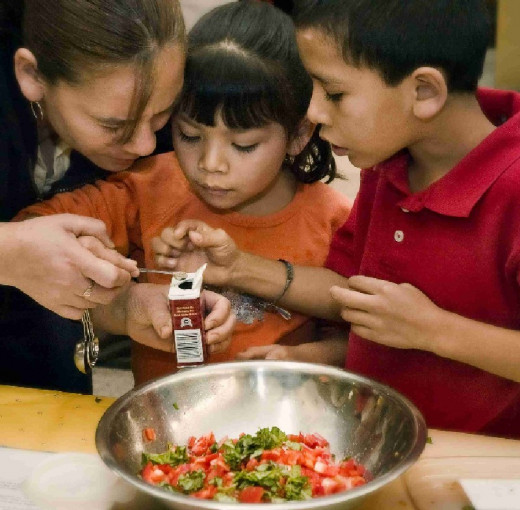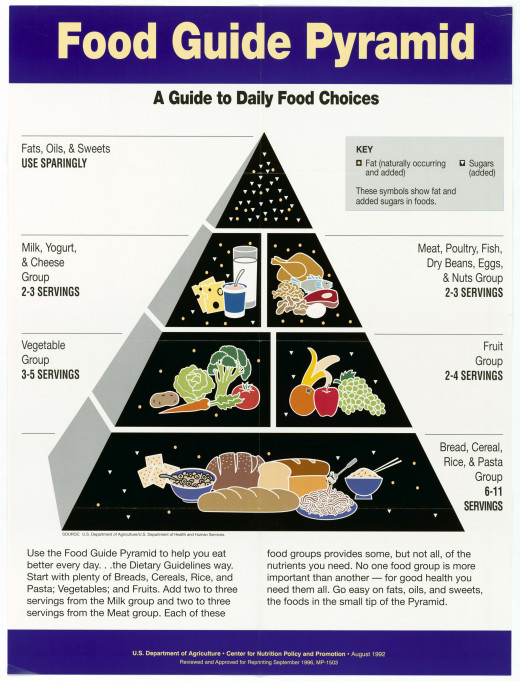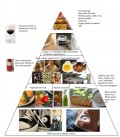Teaching Kids About Healthy Foods
Children and Proper Eating

Teaching Your Children About Food Choices
Healthy eating and food are an important topic to talk about with your child. They are many ways to teach your children about healthy foods, and the earlier you start, the better.
We all need to eat a variety of foods to keep ourselves well nourished. Children who grow up with a food education, will eat more balanced as they grow into adults, and develop good eating habits for a lifetime. High quality food contains an assortment of nutrients including proteins, carbohydrates, minerals, and vitamins that our bodies’ need. Healthy eating includes consuming food that is good for you and also in the proper proportion.
As parents we often are concerned about what our children are eating and if they are eating too much or too little. The first thing to do as a parent is to make sure you offer enough choices. What you bring into your home dictates to some degree what your children will be eating. By offering nutritious varieties of food choices for snacks and at meals, you are giving your children the ability to make good choices about what they eat.
Teaching Kids About Food
Good Habits About Healthy Eating
Healthy eating habits start by having meals together, and making the time around the dinner table pleasant and enjoyable. When you eat together as a family, there should be some ground rules:
- try not to comment about what your child is eating.
- don’t force or pressure you children to eat something if they don’t want to.
- offer healthy choices.
- be a good role model by eating healthy yourself and eating the proper proportions.
- eat about the same time each day.
- eat together at the table, not in front of the television.
- make family mealtime fun and keep the mood positive
- pay attention to each other, avoid distractions from texting, tv, reading and other things that take away from the time you are spending together at mealtime.
Between you and your child there needs to be an agreement. The agreement is that you will offer a variety of healthy and nutritious choices for meals, snacks and food choices. Your child chooses how much they will eat. This will help you child to trust their inner messages that tell the when they are hungry and when they are full.
It is a good idea to feed toddlers approximately every three hours so they don’t get too hungry. Offering water between meals is an easier way to keep your child’s weight down and also encourages them to eat when they are hungry.
Food Groups

Make Nutritious Foods Appealing
Mindless eating is sometimes done in front of a computer or television. It is wise to set limits on the time for these activities. According to the American Academy of Pediatrics, limiting television and computer screen time to about two hours or less per day is better for them.
An important aspect of healthy eating is encouraging physical activity. Walking, dancing, throwing a ball, skipping, riding a bike, and just having fun with your child in an activity that gets them moving will be good for them and good for you.
Babies let us know when they are hungry by crying. They stop eating when they are full.
As toddlers, these two and three year olds start to develop tastes for particular types of foods, with their own likes and dislikes. At this age, it becomes very important to begin to model healthy eating habits for your children and to have nutritious food available for them, so they can make good meal time and snack time decisions. Let your child decide how much to eat by teaching them to trust their bodies and not to eat just because food they like is in front of them.
Poor eating habits can develop for many reasons. Tastes for food are built up over time with exposure to a variety of foods. From infancy, we are born liking the taste of sweet food. So it is a natural tendency as we grow to desire soft drinks and sweets more than other more nutritious foods. If you totally forbid these foods, it will make a child desire them that much more.
By making nutritious foods appealing, you will be encouraging your child to make wise food choices. There are many enticing foods for kids. A suggestion to keep string cheese, peanut butter, freshly popped popcorn, dried fruit, fresh fruit, hummus and bean dip for dipping vegetables like carrots, peppers, and celery. Low fat yogurt with fresh fruit.
Emotions Affect Everyone's Eating One Way or Another
It is important to not make food a power struggle between parent and child. When child feel pressured to eat, they may refuse the food for spite. Let your child decide the amount of food they want to consume from a variety of choices you provide.
Our emotions affect our eating habits. Anxiety, sadness, and feeling upset can cause adults and children to undereat and some people to overeat. If you child is taking some of their emotions out on food, talk with with them about their emotions, not their eating behavior.
Every child has different caloric needs. Don’t compare your children to each other, or to their friends. Some children may just need less calories to naturally sustain themselves.
Good eating habits lead to being well nourished. Nutrients are needed for healthy growth development and being proper weight. Good eating habits strengthen immune systems and help them battle illnesses now and in their future. Overweight children are predisposing themselves to heart disease, diabetes, high blood pressure and high cholesterol when they are adults.
Good habits include:
- eating a variety of foods, fruits, and vegetables
- eating foods high in nutrition
- limiting consumption of soft drinks, chips, and sweets
- stopping when full, even if food is left on the plate
Help your child develop a curiosity for food. Use teachable moments to learn together about different foods. From pictures in magazines and the internet to food shopping and even visiting a farm, expose your children to the variety of food that is out there.
Mealtime is a wonderful opportunity to discuss food, where it comes from and why it is good or not good for their bodies. Make learning a positive opportunity.
Kids and Food Choices
It is very important to teach your child to listen to their body, and not be ruled by outside influences, like how much is on their plate. Encourage your child to eat slowly, and encourage good eating patterns.
Here are some other tips for healthy eating habits for you kids:
-
set up a routine for snack time.
-
eat meals on a regular schedule.
-
talk to your child about what food they like from each food group and make it easily available for them to eat.
-
start the day off with a nutritious breakfast.
-
eat together as a family as often as possible.
-
keep junk food to a minimum, but don’t totally ban chips and sweets or your child will want them even more.
-
keep lots of fruits and vegetables in the house to snack on.
-
make the portions appropriate for your children’s age and size
-
don’t guilt them into eating more than they want to.
-
limit the amount of sugary drinks they consume.
-
be a good role model by making proper choices, knowing your children follow by example.
-
make fast food an infrequent stop.
-
don’t use food as a reward for doing well, or as comfort. Food is for nutrition for their body and on occasion as something fun or as a treat.
-
always encourage them to listen to their body and it is important for you to listen to what they tell you.
-
educate your children about healthy ways to eat.
-
grow some vegetables or herbs in potted plants to teach your children about food.
-
take your children food shopping and discuss what is good for them and not as good. Let them pick out some food to bring home.
-
Let children help you cook and bake.
DVD Cooking With Kids
Teach Your Kids About Nutrition
Teach your children to think about the nutritious value of food and how it will nourish their bodies. Eating fresh and wholesome food, combined with it being good tasting will help your children desire what is good for them.
It is important to teach your children to not stuff themselves, but only eat until they feel full. Teach them what satiety is, so they will eat until they are satisfied. Teach them to eat when they are hungry, but when they do get hungry, eating is not an emergency.
It is important to help older children make choices by thinking about the calories and whether it is worth eating that particular food. Talk to them about eating balanced and the value of nutrition as opposed to the calorie cost.
Teaching your children about healthy foods can be a bonding experience for each of you and for the family.
As your children learn the best choices for healthy eating habits, and to respect their own body, they will develop lifelong patterns of a good relationship with food that will help them maintain their weight, and choose wisely about what they put into their mouths.
The time you invest with them will build memories for a lifetime that will be sweeter than the best desserts you could serve them.










